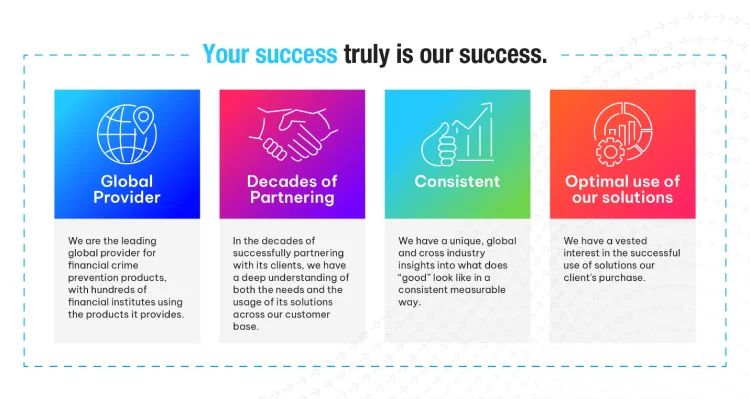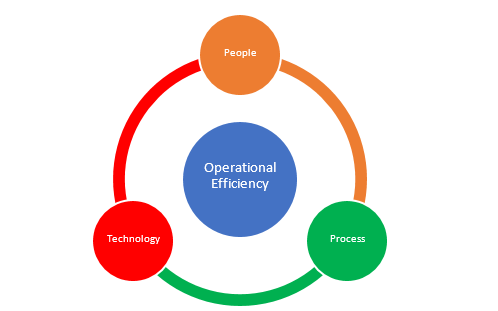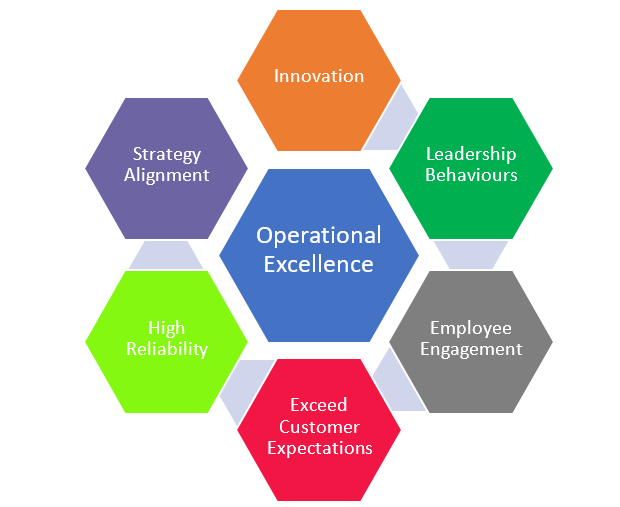Operational Efficiency: Doing better what is already being done
May 20th, 2025

In today’s rapidly changing, high-cost compliance landscape, a financial institution’s (FI’s) ability to maintain operational efficiency (OE) is crucial. It can be the difference between staying competitive and compliant or encountering significant challenges across multiple functions. OE refers to the optimization of business processes and resources for the purpose of reducing operating costs while maintaining or improving productivity. A constant trend within the financial services industry is the need to perform multiple activities related to financial crime operations in a fast and cost-effective way, all the while remaining compliant with regulations.
This article examines the pivotal role of technology in preventing, detecting and mitigating financial crime (FC), while also highlighting other key influencing factors. At the core of them all, OE emerges as the critical link that drives success. Understanding Operational Efficiency
OE within compliance is typically centred around processing costs, e.g. alert triage, investigations and/or generating outputs, such as Suspicious Activity Reporting (SAR). OE in financial crime can be compared to general business practices for measuring OE in production. It focuses on managing high-margin activities while minimizing costs, ensuring the organisation spends the least to achieve the highest possible profits.
On top of cost considerations, the operations processed within compliance must produce tangible results, aimed to ensure the organisation remains within regulatory requirements and effectively mitigates economic crime.
In order to respond to these challenges, banks and financial services organisations need to adopt a comprehensive approach and deploy solutions that identify potential gains in their operating models and processes. However, in a regulated institution this cannot be an exclusively cost-driven exercise, as it needs to ensure regulatory obligations are met.
A productivity-based approach is needed, driving radical change where the joint action of processes and resources can deliver results, especially in those situations when processes are outdated, technology initiatives are not delivering expected value and data poses a challenge. This approach entails the combination and alignment of three key elements: people, process and technology. The correct identification of gaps and issues within these areas, followed by the relevant recommendations on how to align them, is at the core of Operational Effectiveness reviews.
Challenges facing financial crime & compliance operations
Before jumping into what an operational efficiency review entails, it’s important to first examine the key challenges faced by Fis. Beyond the sheer volume of transactions and associated costs to monitor, FC operations are typically affected by a number of obstacles that hinder effective delivery:
- Legacy technology – where FIs suffer from significant data deficiencies and analysts navigate multiple systems that fail to communicate with each other
- Repetitive, unnecessary customer interactions – where ineffective communications lead to a lack of engagement or degrading customer experience (CX)
- Attrition rate and difficulty attracting and retaining talent – high staff turnover which leads to a loss of corporate knowledge and the need for repeated training cycles
- Lack of capacity to absorb inevitable incidents and alert spikes – where FIs repeatedly struggle to meet regulatory requirements and get stuck in a cycle of [backlogged] remediation.
Measure Operational Efficiency with Reviews
An OE review is the process whereby the reviewer determines whether members of management are using the resources entrusted to them in the most economical and efficient manner, to achieve the most effective results of operations.
Performing regular reviews over the existing operations framework brings significant benefits. They keep problems at bay while identifying areas for improvement. Ultimately, OE reviews help FIs optimize their processes, technology and skills, ensuring that resources are used effectively and that potential threats are promptly investigated. Benefits include:
- Reduced cost of compliance: better efficiency drives a significant reduction in the steps and time required to complete processes, simplifying them, with a reduction in the overall cost of compliance and improved competitiveness. This leads to a more efficient and sustainable organisation.
- Regulatory Compliance: lack of efficiency means delays in processing, causing alerts to pile up. This may lead to regulatory enforcement if delays reach levels where the FI’s ability to identify suspicious activity and risks is compromised. Efficiency is not just about making things cheaper and faster; it’s permits Fis to avoid negative regulatory and reputational impacts.
- Continuous Improvement: periodic OE reviews enable the identification and mitigation of potential operational risks. This continuous refinement of processes drives innovation and fosters a culture of improvement that reflects in the organisation’s performance, creating a framework where mistakes or gaps are collectively and quickly addressed.
- Increased Productivity: process reduction time, complemented with the right training and supporting technology, increases overall production. OE reviews facilitate a better integration of the three key elements: people, process and technology, into a delivery framework that produces optimal results over time.
- Headcount Reduction: the application of better technology and processes to financial crime operations enables teams to process a higher volume of alerts in less time. This translates into capacity efficiencies, where manpower can be allocated to other tasks where technology might not be applied as effectively: e.g. complex tasks involving higher levels of decision-making.
- Enhanced Effectiveness: increased efficiency enables the allocation of extra time and resources to other tasks, such as integrating contextual data or expanding samples within Quality Control activities. There is a direct correlation between the benefits of OE and the quality of financial crime investigations (either case narratives or SAR submissions), which ultimately contributes to a better compliance risk management framework.
Next level: from Operational Efficiency to Operational Excellence
When OE becomes part of a FI’s DNA, it drives a culture of striving for excellence, a sense of belonging and improves employee engagement for the organisation. This reduces attrition rates, permitting the workforce to become increasingly more skilled and motivated.
OE creates fertile grounds for critical aspects such as innovation. Let’s take, for example, transaction monitoring or screening operations: once a FI would have mitigated problems related with data quality, and optimized its processes, it would then benefit from moving its current technology stack into more advanced solutions, e.g. Artificial Intelligence/Machine Learning (AI/ML) detection models and/or Generative Artificial Intelligence (GenAI) for investigations. This would lead to an increase of quality and quantity of outputs, e.g. SAR production.
This approach enhances the reliability and confidence in systems and resources, leading to a better customer experience—boosting satisfaction, surpassing expectations and ultimately driving increased revenue.Under these circumstances, empowering leadership and staff to make better decisions becomes far more achievable – especially compared to a framework that continues to carry long standing issues without a clear commitment to resolving them.
Building strategies in an organisation that has achieved this level of excellence through OE becomes a much easier exercise: it is not driven by traumatic events, e.g. regulatory enforcement. More importantly, these strategies must include OE reviews as an integral part of the roadmaps they underpin.
Conclusion
OE is an invaluable strategy that can significantly improve an organisation’s position on critical areas like regulatory compliance and cost-effectiveness, by offering deep insights into its potential performance, as opposed to simply reflecting how the organisation currently operates.
By carefully analysing the organisation’s processes, systems and skills against industry standards and best practices, companies can pinpoint specific areas that require improvement. This systematic approach not only helps in boosting efficiency, but also cultivates a culture of continuous improvement. Ultimately, OE serves as a force-multiplier for organisations to achieve higher standards of performance, ensuring they remain compliant, competitive and innovative.
Improving Operational Efficiency with NICE Actimize

Let us help you on your OE journey and achieve sustainable success. Contact us today to schedule a consultation and learn how our industry expert team can assist you in:
- Review your current policies, operations processes and standing procedures
- Identifying areas for improvement
- Setting realistic, measurable goals
- Integrating best industry practices
- Driving continuous improvement
- Enhancing competitiveness





